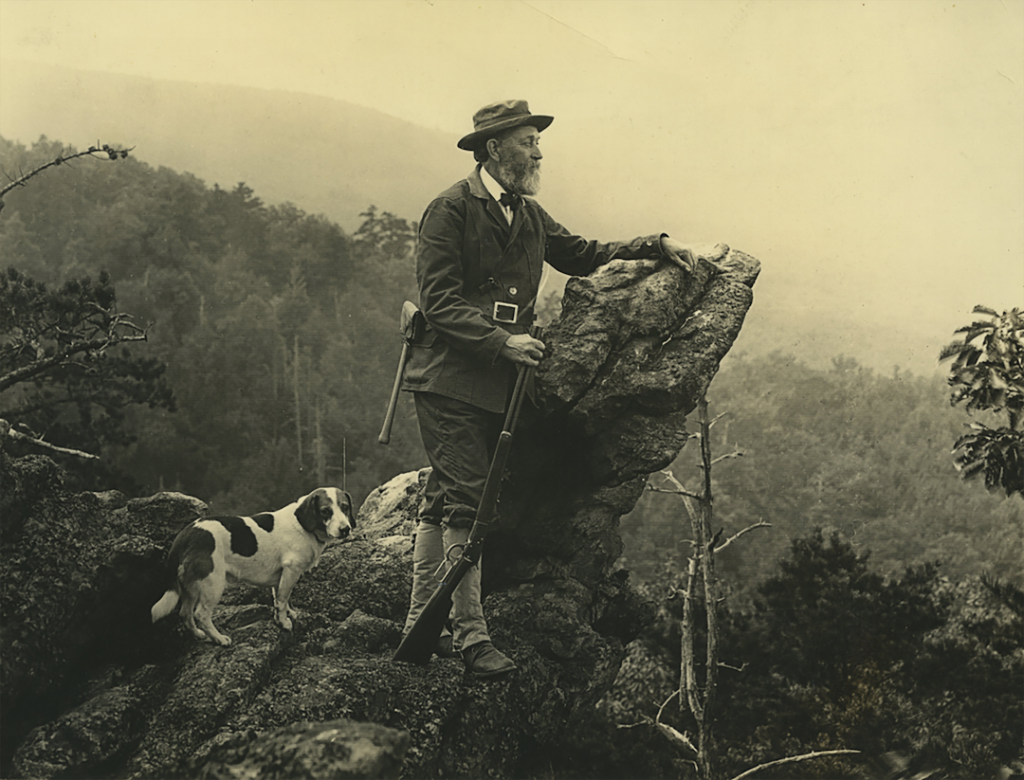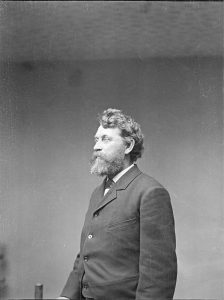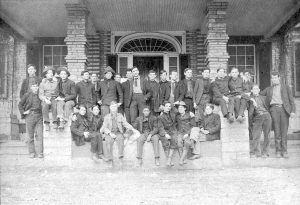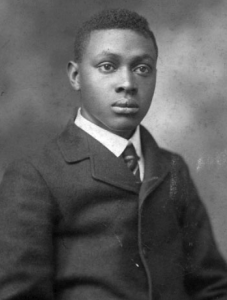Brandywine Stories: Celebrate Joseph Rothrock Week
Photos courtesy of the Chester County History CenterBeginning April 19, 2025

News headlines in the opening weeks of 2025 were dominated by two very different, unrelated events. In southern California, powerful winds and dry conditions fueled more than 300 separate wildfires that destroyed over 57,000 acres and cost 29 lives. Over 1,500 miles away in Kansas City, 67 people were diagnosed with tuberculosis.
Both these tragic events have at least one historical connection with a notable Chester Countian named Joseph Trimble Rothrock.
Early Years

In 1839, Rothrock was born in McVeytown, Mifflin County, to the northwest of Harrisburg. His love of the outdoors led him to study botany at Harvard, but he also had an explorer’s heart, serving on several expeditions to the West and north to what was then known as “Russian Alaska.” In fact, Rothrock’s notes on Alaskan plant life may have played a role in President Andrew Johnson’s decision to purchase the territory in 1867.
Rothrock had two aunts living in West Chester, and on one of his visits there, he met his future wife Martha May. He and Mattie married in 1869 and had five children, three of whom survived to adulthood. Their brick home at 428 North Church Street still stands.
The study of botany, unfortunately, was not as lucrative as Rothrock had hoped. To support his family, he got a degree in medicine, but practicing as a doctor bored him. In a turn of good luck, the University of Pennsylvania had an opening for a botany professor, which Rothrock eagerly accepted.
Father of the Forest
In 1877, Rothrock began a series of public lectures about his love of old-growth trees and the clean water and rejuvenating air they provided. In 1886, a group of individuals, including Rothrock, formed the Pennsylvania Forestry Association. Rothrock warned audiences about careless over-lumbering and the resulting flooding and erosion. “Unless we reforest, Pennsylvania’s highlands will wash into the oceans,” he said.
The Forest Association lobbied the state legislature to establish forest “reserves,” where desolated areas could be replanted with new trees. The effort took years, but in 1895 Pennsylvania created the official position of Commissioner of Forestry. Rothrock was the obvious choice to fill the role, and by 1907, the Division of Forestry succeeded in saving 750,000 acres.
The biggest threats to both new and existing woodland were the almost yearly forest fires, which in 1896 alone destroyed over 225,000 acres in Pennsylvania. In response, Rothrock spearheaded new firefighting techniques, including a mobile “fire wagon” and water pumps that could be used in the wilderness.
Fighting the “White Death”

In 1904, Rothrock resigned from fulltime forestry supervision. He was 65 years old but had no plans to retire to a quiet life. While he’d hated being a doctor, he always believed in the power of forests to heal.
At the turn of the 20th century, an average of 450 people died of tuberculosis in the United States every day. In 1904 alone, 115 people died in Chester County from the disease. Without financial support — or permission — from the state, Rothrock started a camp for “consumptives” in Mont Alto State Forest, west of Gettysburg. This camp grew every year, and in 1907 Rothrock turned it over to the newly established Pennsylvania Department of Health. By 1919, the sanatorium had become the largest free facility for the treatment of tuberculosis in the world.
Rothrock continued to lecture and consult on forestry matters until his death in 1922 at the age of 83. He was laid to rest in Oaklands Cemetery in West Chester. Forester Gifford Pinchot acknowledged the heartbreaking loss by writing: “What he did for Forestry in this state has never been equaled in the history of our country by any man in any other state.”
In 1965, Pennsylvania named the Rothrock State Forest located in Centre, Huntingdon and Mifflin Counties in his honor. The Pennsylvania Parks and Forests Foundation continues to remember him every year in April for Joseph Rothrock Week, urging Pennsylvanians to “get outside, take a hike and breathe in the fresh air.”
Today, Pennsylvania boasts 2.2 million acres of state forests, covering 50 of the state’s 67 counties. While that’s less than half Rothrock’s goal of 5 million acres, Pennsylvania’s state forest system in still one of the largest in the country. If you’d like to honor Joseph Trimble Rothrock’s memory, visit one of the many state forests, such as the William Penn State Forest.
A New Generation of Foresters

Rothrock’s Division of Foresty was so successful in its first few years that another problem quickly arose — finding qualified workers to care for the ever-increasing acreage of delicate new trees.
By 1901, there were only three forestry schools in the country — Yale, Cornell and the Biltmore Forest School in North Carolina. Unsatisfied with the small pool of talent, Rothrock decided to start a new forestry school in Mont Alto, based on his principles of hands-on learning.
The first class of six professional Pennsylvania-trained foresters graduated in 1906. Among those was a Black man from West Chester named Ralph Elwood Brock, who became the first professional forester of color in the country. Brock served as supervisor of Mont Alto’s seed nursery for five years and resigned in 1911 to care for estate gardens and orchards throughout the eastern U.S. When he died in 1959, he was buried in Chestnut Grove Cemetery in West Chester.
Today, Penn State Mont Alto*, the forestry school started by Joseph Rothrock, continues to train new generations of foresters.
*The school is at risk of closing due to declining enrollment.
 Jennifer Green, Director of Education at the Chester County History Center, wrote this article as part of Chesco250. The Brandywine Stories series is designed to raise awareness of the expansive history and culture of Chester County and build excitement for 2026, the 250th anniversary of the Declaration of Independence.
Jennifer Green, Director of Education at the Chester County History Center, wrote this article as part of Chesco250. The Brandywine Stories series is designed to raise awareness of the expansive history and culture of Chester County and build excitement for 2026, the 250th anniversary of the Declaration of Independence.
